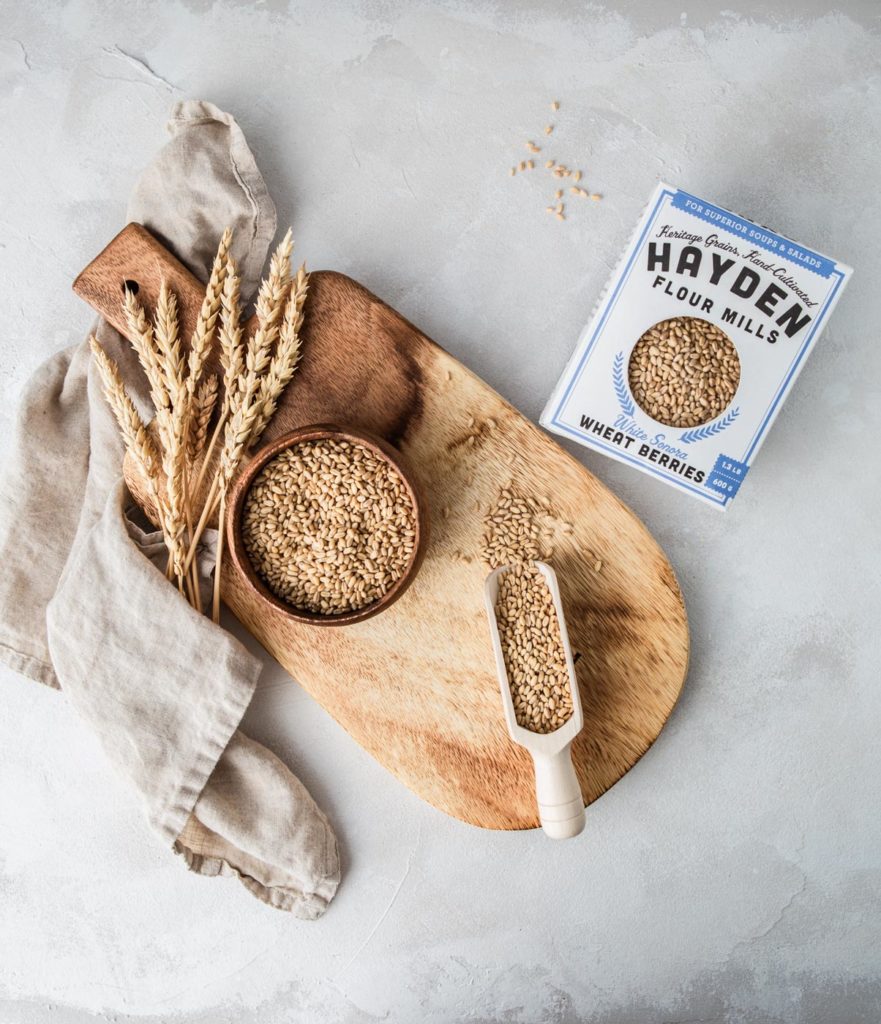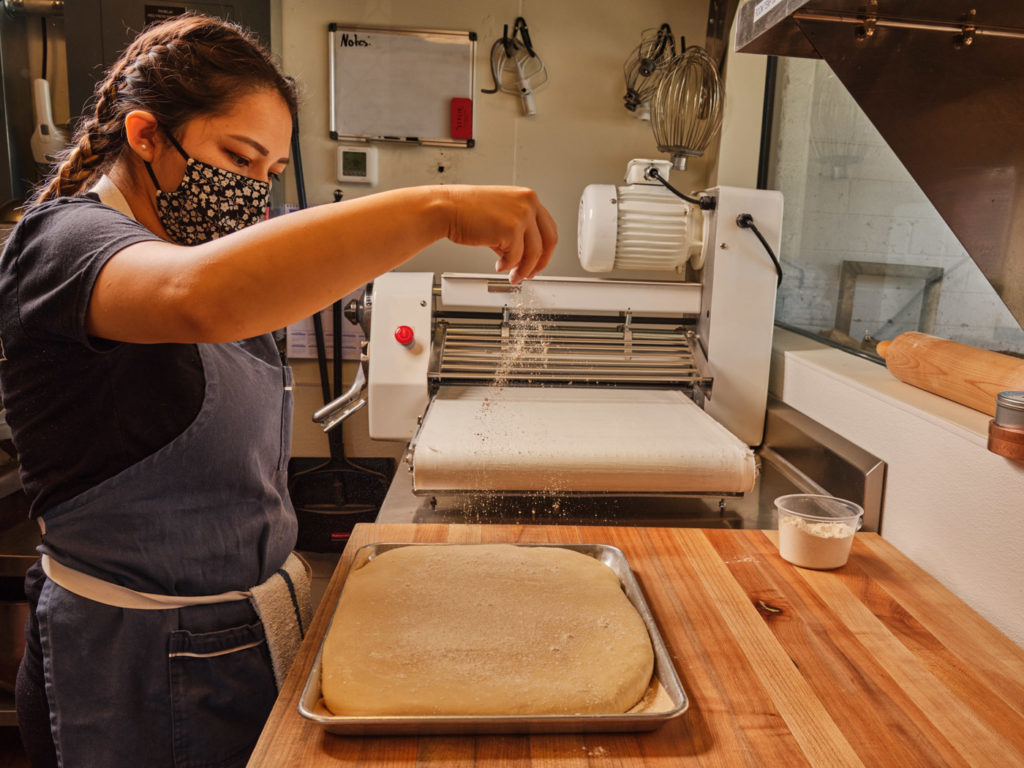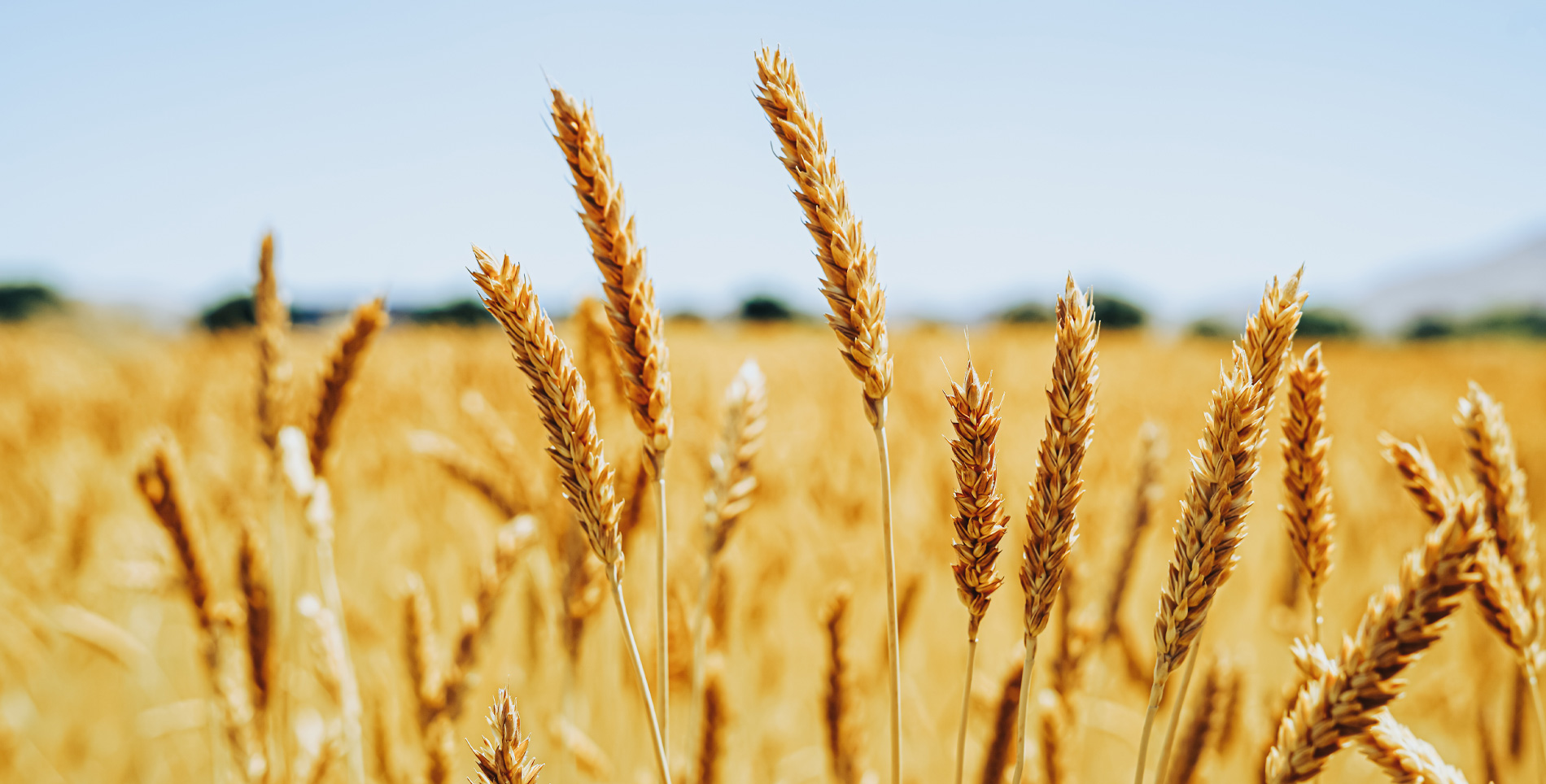As an Arizonan, I’ve long felt my home state boasts some of America’s most iconic landscapes.
If not the expanse of the Grand Canyon or the Red Rocks of Sedona, I think of towering saguaro cacti, riddled with cactus wren holes. Or perhaps one of those fleeting spring moments, after an all-too-rare rainfall when the desert wildflowers burst into bloom.
What doesn’t come to mind, however, are golden fields of wheat, rustling in the wind. And yet, some 30 miles south of Phoenix on the Gila River Indian Community, you’ll find precisely that. The community is home to the Akimel O’odham, who were among the first people to grow wheat in the Americas.
“We are the Akimel O’odham. We are descendants of the Hohokam. We’ve been here since time immemorial,” says Michael Preston, who serves as the coordinator for the Akimel O’odham/Pee-Posh Youth Council.
“Akimel O’odham” translates to “River People,” and, as the name suggests, the tribe has long farmed the Gila River Basin.
One such farm in the Gila River Indian Community is Ramona’s American Indian Foods, founded by Ramona and Terry Button in 1974 on Ramona’s mother’s 10-acre allotment along the Gila River in Sacaton, Arizona.
Ramona’s American Indian Foods products are USDA certified organic and are certified authentic by the Intertribal Agricultural Council as made and produced by American Indians. Ramona Farms’ product line also includes stone-milled heritage whole-wheat flour, stone-milled mesquite parched cornmeal, grits, wheat and corn pinole, dried cob-roasted corn (whole kernel or stone cracked).
Today, Ramona’s American Indian Foods specializes in the production and processing of the traditional food crops of the Akimel O’odham, Ramona’s people. The crops grown include the indigenous crops of three varieties of tepary beans—which Ramona and Terry brought back from the edge of extinction—four varieties of Indian corn, as well as acculturated crops of White Sonora and Pima Club wheat, garbanzo beans and black-eyed peas, which were introduced to the Pimas in the late 1600s by Padre Eusebio Kino who brought these seeds from the Mediterranean, Arabia, North Africa and Persia.
The Pima farmers readily adapted these Eastern Hemisphere food crops into their cropping system, growing them in rotation with their indigenous crops, which also included squash, gourds, cotton and tobacco.
When Kino came into contact with the Akimel O’odham, they already had a sophisticated agrarian society built around irrigation utilizing the Gila River. Their complex system of irrigation canals provided the template for the city of Phoenix’s modern canal system.
“Our ancestors created the canal ways throughout the Phoenix area, over 700 miles of major canals and many more miles of smaller canals,” says Preston. “They were able to utilize that water for hundreds of thousands of acres. It was one of the most complex water systems in the world.”
The Akimel O’odham embraced the new grain, which, unlike their traditional crops, grew in winter with a summer harvest. The new source of food led to culinary innovations, such as the flour tortilla, developed by the O’odham people, and has become the “quintessential centerpiece of Sonoran cuisine.” explains Terry Button.
Over the centuries, the variety adapted to the arid climate. “Our heritage wheats are a drought-tolerant crop. They thrive in Arizona,” says Debbie La Bell, General Manager at Hayden Flour Mills, a micro-mill in Queen Creek, Arizona.



Hayden Flour Mills utilizes a cold, stone-milling process to preserve the flavor and nutrients of their heritage grains. In addition to White Sonora, they offer flour blends with Emmer farro wheat and Gazelle Rye, which is sourced from the Yavapai-Apache Nation.
“In modern industrial milling, they start with commodity wheat and use a roller-milling process that essentially shaves all of the bran off of the wheat berries. They just use the endosperm,” says La Bell. “Stone-milled wheat takes the entire wheat berry. We have the endosperm, the germ, and also the finer parts of the bran in our wheat.”
Because of its lower gluten content, Hayden Flour Mills recommends blending White Sonora with other heritage wheat varieties for artisan bread; but the variety is particularly well suited for tortillas, flatbreads and pastries. “It has a very light, sweet flavor. This is more on the vanilla spectrum,” she says.
Although Hayden Flour Mills largely depends on a clientele of chefs and bakers, in 2020, they saw a huge spike in online orders as more people took up baking in the early days of the pandemic.
According to La Bell, once someone discovers the quality of micro-milled, heritage grains, there’s no going back to conventional, bleached flour.
“You get a superior flavor. There’s absolutely no comparison,” she says. “They often say nutrition follows flavor. There’s a lot more vitamins in those products.”
___
In 1944, a young agronomist from Iowa named Norman Borlaug arrived in Mexico with a lofty goal: eradicate world hunger by increasing wheat yields. The plant-breeding techniques Borlaug helped develop changed the world of agriculture, sparking the “Green Revolution.”
Borlaug’s wheat varieties, such as Sonora-63 and Sonora-64, utilized Sonora wheat, but crossbred with Japanese dwarf varieties. The shorter plant had a stronger stalk, allowing for larger yields brought on by chemical fertilizers.
Borlaug’s varieties were wildly successful. Within 20 years, the large majority of wheat grown in Mexico was one of Borlaug’s hybrids. He went on to work in India, Pakistan and Ethiopia. And in 1970, Borlaug was awarded the Nobel Peace Prize in recognition of his role in alleviating world hunger.
But the higher yields came at a cost. Rather than slowing deforestation through more efficient farming, the new varieties sparked an increase in large-scale monocultures.
Another unwitting causality was flavor. The Sonora hybrids lacked the sweet complexity of their progenitor. Over time, consumers became accustomed to the bland flavor of enriched flour, and lower-yielding heritage varieties like White Sonora slipped into relative obscurity.
But a growing number of Arizona chefs and bakers are championing the original White Sonora wheat, grown practically in their backyard.
“The flavor is incredible. Not to be stereotypical, but you can really taste the wheat,” says Chef Donald Hawk of the Phoenix restaurant Valentine.




“Valentine is celebrated as an Arizona restaurant. There are a lot of diverse things that make up Arizona,” he says. “It’s us trying to explore the region.”
For the team at Valentine, that entails using squash instead of potato in their house-made rolls and cactus in their martinis. When it comes to White Sonora wheat, Valentine’s head baker, Antonia Lee Kane, utilizes the ingredient in almost all of her baked goods.
“The White Sonora wheat we use in the restaurant goes in a few things. It goes in all of our bread—we’re using it for sandwich bread and burger bun production. It goes in our croissants and pasta,” says Hawk.


Valentine sources their White Sonora wheat from BKW Farms, a family-owned farm in Marana, Arizona. BKW is a USDA organic-certified grower of Sonora Wheat in Arizona. They also supply White Sonora and other heritage grains to Don Guerra, the James Beard-nominated baker at Tucson’s Barrio Bread.
Hawk also sources ingredients from Ramona Farms, lauding their Pima grits and tepary beans.
“It’s the terroir that makes these beans. They really have an incredible flavor. There’s not much more that we need to do than cook them and put them on a plate and serve them,” he says. “We’re very fortunate we have them, truthfully.”
___
For centuries, the Akimel O’odham lived at peace with outsiders. During the California Gold Rush, they gave safe passage to pioneers on the way to California. The U.S. National Guard even enlisted the tribe to protect the southern border with Mexico, an event still celebrated annually by the Akimel O’odham on Mustering-In Day.
Despite their cooperation and hospitality, things began to change as more settlers from the United States came into the region. The town of Florence was founded upriver, and a canal built in the 1880s diverted large amounts of water. Soon, the lack of water downstream led to food scarcity for the Akimel O’odham.

In the 20th century, these traditional crops almost disappeared when the Akimel O’odham’s water was taken from them. The Coolidge Dam, which began operation in 1930, promised to help solve water supply issues, but had the opposite effect. The Gila River ran dry.
“When the dam was created, the water stopped coming. We lost our ability to grow our crops. We lost our ability to eat,” says Preston. “People were starving and dying because we couldn’t make a livelihood.”
The river had been the lifeblood of the Akimel O’odham for thousands of years. They were not only unable to grow their own crops, but also lost their main source of protein.
“My grandmother told me she remembered her father and uncles fishing. I asked her where they were getting fish, and she said the river,” says Preston. “I grew up with there never being a river. It’s been sand my whole life.”
With the tribe on the brink of starvation, the federal government finally intervened, providing military-style rations. But the cheese and oil-heavy food was unfamiliar to the Akimel O’odham, and decidedly less healthy.
“The next generation started to believe these were our traditional foods—the fried foods,” says Preston. “They took something that was our heritage, that was healthy, and gave us something that was not.” The health ramifications are still being felt today.
For Preston, the impact of the dam was not just economic, but sociological. “Every culture revolves around food. When you take that food away, you take that sense of family and belonging—those family gatherings. That shifted when our food was taken away,” says Preston. “You changed the family dynamics. Imagine years of not being able to eat and enjoy meals together. You’re just trying to survive. It really devastates that core family for generations after. Now we’re trying to reconvene as families.”
Today, the Akimel O’odham/Pee-Posh Youth Council is working to reintroduce traditional cooking—especially the nutrient-rich tepary beans. Last year, the council began offering virtual cooking classes for tribal youth. They mailed packages of ingredients to participants, who had to ask an adult relative to supervise the cooking.
“We’re able to talk to the families. It’s great because people will say, ‘my grandparents used to eat this,’” says Preston.
In 2004, the tribe won a landmark court case which ruled they were deprived of their water rights and were subsequently ordered restitution. With access to water restored, agriculture in the Gila River Indian Community is on the rise.
“İt’s had a huge impact. It’s helped us focus again on farming. The community farms as a whole, and
we’ve been better able to support our individual farmers with water for their crops,” says Preston.
“This was ours. It’s part of who we are. It’s really us as O’odham people,” he continues. “We want to make sure we reclaim what was ours.”







Our comments section is for members only.
Join today to gain exclusive access.